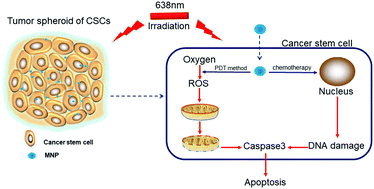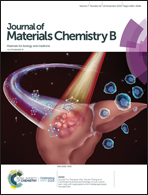Combinatorial photochemotherapy on liver cancer stem cells with organoplatinum(ii) metallacage-based nanoparticles†
Abstract
Liver cancer is a kind of lethal and aggressive malignant neoplasm with a high rate of relapse and metastasis after therapy. An important cause for the relapse and metastasis is the existence of liver cancer stem cells (CSCs), which have high resistance to chemotherapy and high tumorigenic potential. Therefore, it is crucial to develop new methods to eradicate CSCs in tumors. Herein, we develop a photodynamic therapy (PDT) that features bimodal metallacage-loaded nanoparticles (MNPs) for integrated chemotherapy. This platform achieves chemo-photodynamic combinational therapy. Organoplatinum(II) metallacage-loaded nanoparticles show excellent ability to kill liver CSCs, decreasing their mobility and sphenoid formation ability under near-infrared laser irradiation. Importantly, MNPs can successfully penetrate into 3D tumor spheroids, which display higher drug resistance compared to traditional 2D cultured cells. This destroys CSCs and prevents subsequent tumor formation in vivo. With the excellent combinational therapeutic results in hand, the working mechanisms of MNPs were then studied. MNPs under NIR light irradiation can generate reactive oxygen species (ROS), resulting in damage of mitochondrial membrane and subsequent cell apoptosis with chemotherapeutic platinum. This study proves the great potential of MNPs for combinational cancer therapy, providing a new insight for the next generation of nanomedicines.



 Please wait while we load your content...
Please wait while we load your content...